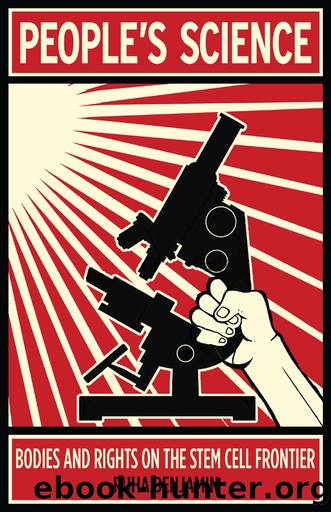People's Science by Ruha Benjamin

Author:Ruha Benjamin [Benjamin, Ruha]
Language: eng
Format: epub
Tags: Social Science, Sociology, General
ISBN: 9780804786737
Google: RHpoPOfZeEcC
Publisher: Stanford University Press
Published: 2013-05-22T04:04:33+00:00
CHAPTER FIVE
DEPATHOLOGIZING DISTRUST
The problem of distrusting citizens should be recast or reformulated as an issue of social justice.
âJohn Johnson, Andrew Melnikov, âThe Wisdom of Distrustâ1
The organization that owns trust, owns its marketplace.
âJulie Brownlie, Alexandra Greene, Alexandra Howson, Researching Trust and Health2
ON MARCH 14, 2008, a celebrated African American artist, Casper Banjo, walked from his East Oakland home to the nearby police station to seek help. Observing what later turned out to be a replica gun, police shot the seventy-one-year-old Banjo to death. As his good friend, fellow disability activist and artist Leroy Moore, would later explain, Casperâs life chances were determined far less by any biological defect than through a complex intersection of race, gender, class, and disabilityâthat is, by the social disorder that surrounded him.3 In the days leading up to the passage of Proposition 71, this understanding led Leroy to ask whether the California Stem Cell Initiative âwould reach his people and other people of color who are wheelchair users because of police brutality?â Then, following the murder of Casper Banjo, Leroy wrote a mournful tribute in the same online venue, Poor Magazine, where he had first questioned the impact of Prop. 71:
Casper was a talented and peaceful black disabled artist who touched the world with his printmaking, brick layering, black activism and . . . his love of stories. . . . Casper Banjo was a great storyteller. . . . however these stories can no longer be heard in Casperâs voice. We, family, friends, artists and members of the National Minorities with Disabilities Coalition, will make sure Casperâs story and the night his life came to an end will be told.4
Indeed, the act of storytelling can open up civic discourse to the experiences of those who struggle to press the levers of power to address the life-and-death issues that keep them up at night. While the everyday policing and penalization of inner-city black life is well documented in the scholarly literature,5 the set of injustices related to Casperâs murder is less well understood.6 In March 2010, Los Angeles police shot an African American autistic man, Steven Eugene Washington, twenty-seven, in the head because he was not responding to their commands and seemed to be reaching for a weapon. Like Casper Banjo, Steven Washington was not armed. Only months after Stevenâs fatal shooting, police in Seattle shot John T. Williams, a Native American woodcarver who was partially deaf, four times because he did not respond to the officerâs repeated direction to put a knife, which was later found to be in a closed position, down. What do we make of the growing body count of people who are victimized, in part because of their disabilities, at the hands of those whom we entrust to protect and serve society? How, if at all, do peopleâs experiences of everyday policing relate to their trust in other social institutions?
Social disorder, which leaves people like Casper, Eugene, and John vulnerable to overzealous policing (itself a symptom of poor government priorities, which
Download
This site does not store any files on its server. We only index and link to content provided by other sites. Please contact the content providers to delete copyright contents if any and email us, we'll remove relevant links or contents immediately.
Harry Potter and the Goblet Of Fire by J.K. Rowling(3023)
Unfinished: A Memoir by Priyanka Chopra Jonas(2911)
Never by Ken Follett(2868)
The Man Who Died Twice by Richard Osman(2289)
Machine Learning at Scale with H2O by Gregory Keys | David Whiting(2261)
Fairy Tale by Stephen King(2058)
Will by Will Smith(2031)
Rationality by Steven Pinker(1759)
The Storyteller by Dave Grohl(1654)
The Dawn of Everything: A New History of Humanity by David Graeber & David Wengrow(1563)
The Dark Hours by Michael Connelly(1561)
The Stranger in the Lifeboat by Mitch Albom(1524)
Cloud Cuckoo Land by Anthony Doerr(1428)
The Becoming by Nora Roberts(1323)
Friends, Lovers, and the Big Terrible Thing by Matthew Perry(1320)
Einstein: His Life and Universe by Walter Isaacson(1310)
Crying in H Mart by Michelle Zauner(1309)
A Short History of War by Jeremy Black(1295)
New Morning Mercies: A Daily Gospel Devotional by Paul David Tripp(1295)
